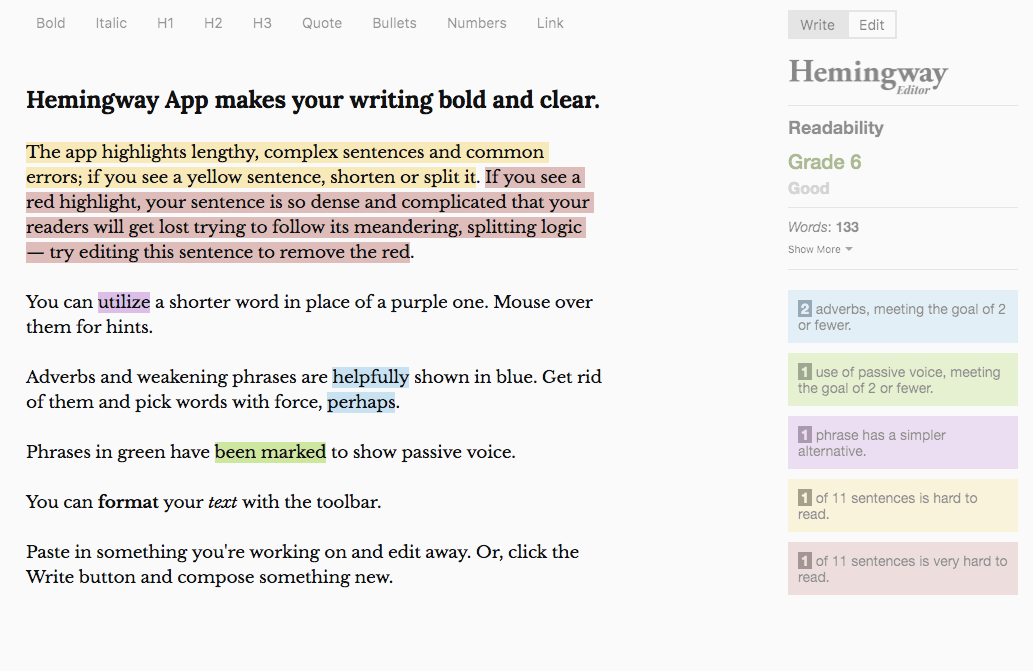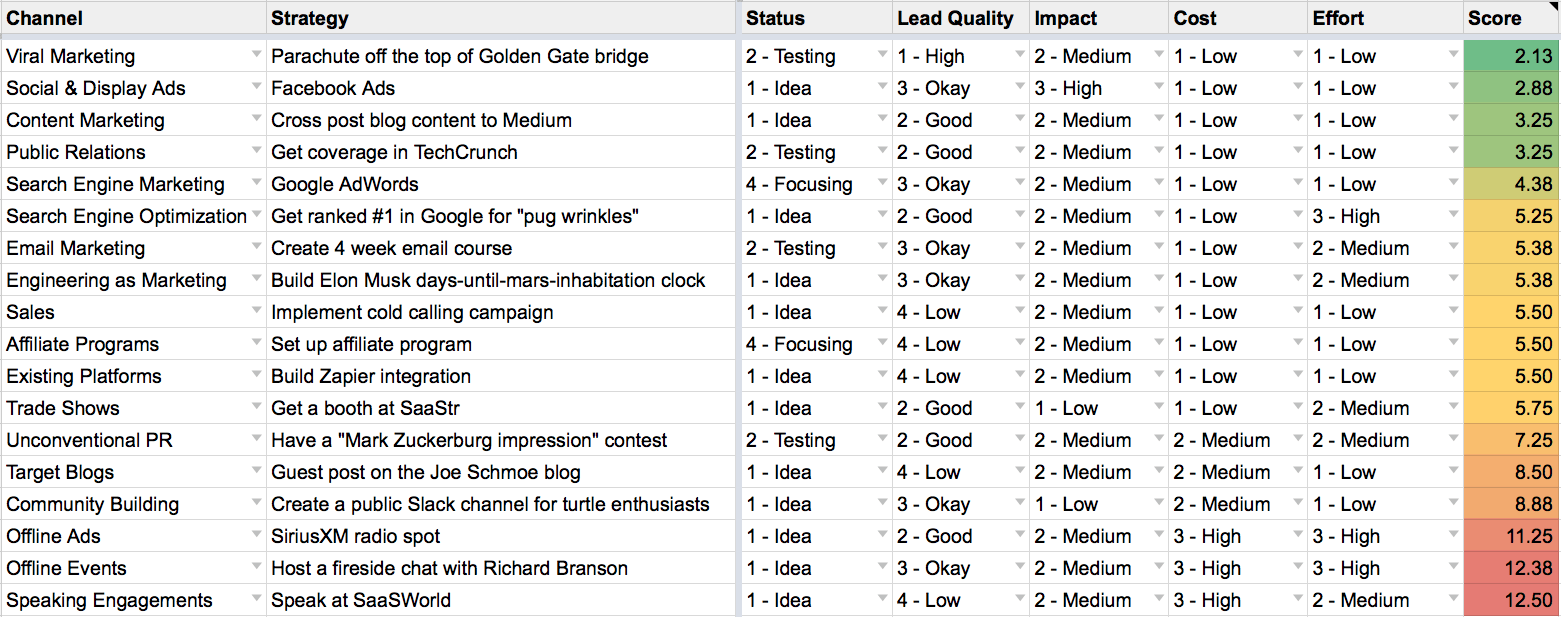So you want to be a successful product marketer. There’s no one size fits all answer.
Because a product marketer figures out how to promote and sell a specific product, your job will change drastically if you change companies (every product has its own niche). It might even change drastically within the same company.
Think of Uber rolling out Uber Eats. Even though you won’t normally be switching from ride sharing to food delivery service, the process of product marketing will evolve over time both inside and outside of your specific workplace. And the day-to-day activities of your job will change along with it.
We’ve put together a list of traits that every product marketer needs—traits that will help you stand the test of time, no matter what product you’re working for or how your product grows. These traits will help you jump over any hurdle the industry throws at you.
1. Live and Breathe Your Product
As the product marketer, you’re responsible for so much more than your job description. When we think about product managers, we think about a person whose life turns around their product—they’re thinking about it in the shower, on the subway, and in line to grab a sandwich.
There’s more to your job than what’s in the description. A successful product marketer should have the same passion for their product as the product manager. Think of the most successful fictional marketer of all time—Don Draper meditating on the beach, conceptualizing “I’d Like to Buy the World a Coke.”
Saeed Khan, product manager at Informatica, provides a good framework for thinking about how the product marketer relates to the product manager. While people often say the product manager gets the product “on the shelf” and the product marketer gets the product “off it,” these two are more interrelated than they seem. A product marketer should be hired as a product team member—to bring the buyers to the company, but also to bring the company to the buyers.
2. Learn to Write Like Ernest Hemingway
A marketer’s value rests on whether or not they can cut through the noise. Customers not only dislike having their time wasted, they’ll tune you out. 81% of people only skim what they read online (but we’re crossing our fingers that you’re reading every word of this post!).
To be as concise and informative as possible, use a strategy Ernest Hemingway coined: The Iceberg Theory. The Iceberg Theory is when a writer gives only “the tip of the iceberg,” putting a spotlight on the most important information. Writing “the tip of the iceberg” implies what’s underneath the water, but focuses on the most important points for the reader.
As a marketer, you’re probably one of the best writers at your company, so it’s hard to get feedback. But Hemingway App is a free web service that helps you implement The Iceberg Theory directly in your writing.

[source]
The app highlights common readability issues, and even gives your writing a “Grade Level Score” based on how difficult it is to understand.
3. Know What’s Happening in Your Industry Inside and Out
Product marketers don’t have just one industry to conquer, they have two: both marketing and their product’s niche.
You already know you have to strive to be the best at marketing techniques, but knowing where your product stands in context of its larger industry will help you target your ads to your audience. You need to know industry trends and your product’s competitors to make it stand out in the crowd.
Our recommendations for acquiring startup industry knowledge (although only you can know what’s specific to your field) are Hiten Shah and Mattermark. Both run curated newsletters for must-read industry posts. Hiten Shah also runs the podcast The Startup Chat, with co-founder Steli Efti. It covers a different startup topic twice a week, so it’s great if you’re looking for a productive way to spend your commute.
4. Master the Art of Surveys to Answer “Why” Questions
You can gather so much data with analytics tools that will tell you what customers are doing with your product, but it’s harder to know why they’re acting the way they are. Customer feedback lets you fill in the missing pieces. When you survey your customers, you can answer your most pressing questions and discover the holes in your marketing strategy.
For example, you might know all your product’s strengths, but that doesn’t mean your customers do. I Done This used Qualaroo to survey customers and see how many were using their productivity app for personal or business purposes. From the results of the survey, they discovered that most people who signed up for a free trial used the product for personal reasons—fewer were taking advantage of their (more profitable) enterprise solutions.

[source]
From there, they knew to change their marketing materials to focus on their team-based solutions. They knew that customers were signing up, but they didn’t know why. By surveying, they filled in a missing piece of the puzzle—and were able to increase conversions dramatically.
FREE. All Features. FOREVER!
Try our Forever FREE account with all premium features!
5. Run A/B Tests to Discover Untapped Profits
Even on a day-to-day or week-to-week basis, marketing is an ever-changing field. Experimentation breeds innovation, and in marketing, innovation leads to untapped profit. You have to be willing to take (calculated) risks to reap exponential rewards.
For example, L’Oreal realized their consumers were reluctant to buy makeup online, because they couldn’t try it on. They launched an app (which was downloaded 7 million times) to give users a “virtual makeover” and let them see what certain products would look like on their face.
If you don’t have the budget for an innovation like L’Oreal’s, there are other low-risk, high reward ways to test out new strategies. A/B testing is an easy way to experiment with innovative marketing techniques. The team at Conversion Rate Experts tested to see if personalized landing pages helped conversion rates. They used the Optimizely integration with Qualaroo to ask visitors demographic questions, and then lead them to a personalized landing page—conversion rates went through the roof.
 [source]
[source]
Using an A/B testing program is a lower budget way to experiment with what works to convert your customers.
6. Develop a System of Prioritization to Risk Manage Your Projects—Automatically
Not every feature launch is created equal for the marketing team. For example, if you roll out a feature that merely makes your mobile analytics app achieve competitive parity, you’re going to want to spend less time marketing it than if you’ve figured out a way to revolutionize the industry.
Because there’s so much room for experimentation in marketing, it’s hard to know what to prioritize. It’s also easy to get attached to an idea that you think could revolutionize your conversion rates, pour a huge portion of your budget into it, and have it utterly flop.
But Baremetrics created a marketing initiative prioritization system to help you risk manage when prioritizing different projects. If you use this tool, you can automatically assess whether your projects are worth pursuing—because the one project that you’ve been fighting to push through in every meeting might not be the one that sticks.

[source]
By creating a “prioritization score” for each of your projects, which it determines using lead quality, impact, cost, and effort numbers that you input, you can take the emotion out of deciding which projects to pursue.
Also, check out this article on further prioritiation techniques you can consider.
7. Hone Your Narrative Ability to Always Lead with a Story
It’s Amazon’s philosophy to start with the customer’s needs before they create a product. In fact, they make their product developers write press releases before they’re allowed to draft a single line of code. They put their value proposition first—because no one’s buying your product, they’re buying a solution to their problem.
Understanding a product’s solution is part of why it’s important for a product marketer to be in the loop with the core product team. But it’s not enough for you to understand your product’s story. Your customers have to, too.
Branding agency The Story of Telling puts forth a three-pronged model for building your product’s story.
- Speak to the customer’s worldview. What is the change your customer is hoping for? How will your product help them make that change? Illuminate the necessity for using your product within their day-to-day life.
- Make the customer feel something. What does your customer feel before they’ve used your product? How do they feel after using it? Play on the emotions associated with using your product.
- Help them rationalize their decision. What are the facts about how your product will make their life better? Show them what you can promise them in the long term.
By creating a narrative of your customer’s experience, you’ll better understand what they care about—and how to speak to it.
Be a Constant Innovator
Marketing is about solving an ever-changing set of problems. When digital media came to prominence, marketing became about shifting techniques to a new platform. Now, digital marketing is about rising above the noise to get your customer’s attention. When content marketing came on the scene, the challenge was creating content, and now it’s shifted to creating standout content.
While the elements of your product marketing job might change year to year, week to week, or even day to day, these skills will make sure you’re ready for those changes. In fact, this is the best part of a job in product marketing. There’s constant innovation, so there’s constant room for innovation—you never know what you’ll be able to contribute.
 Tips
Tips
We’d love to hear your tips & suggestions on this article!
FREE. All Features. FOREVER!
Try our Forever FREE account with all premium features!

 We'd love your feedback!
We'd love your feedback! Thanks for your feedback!
Thanks for your feedback!





